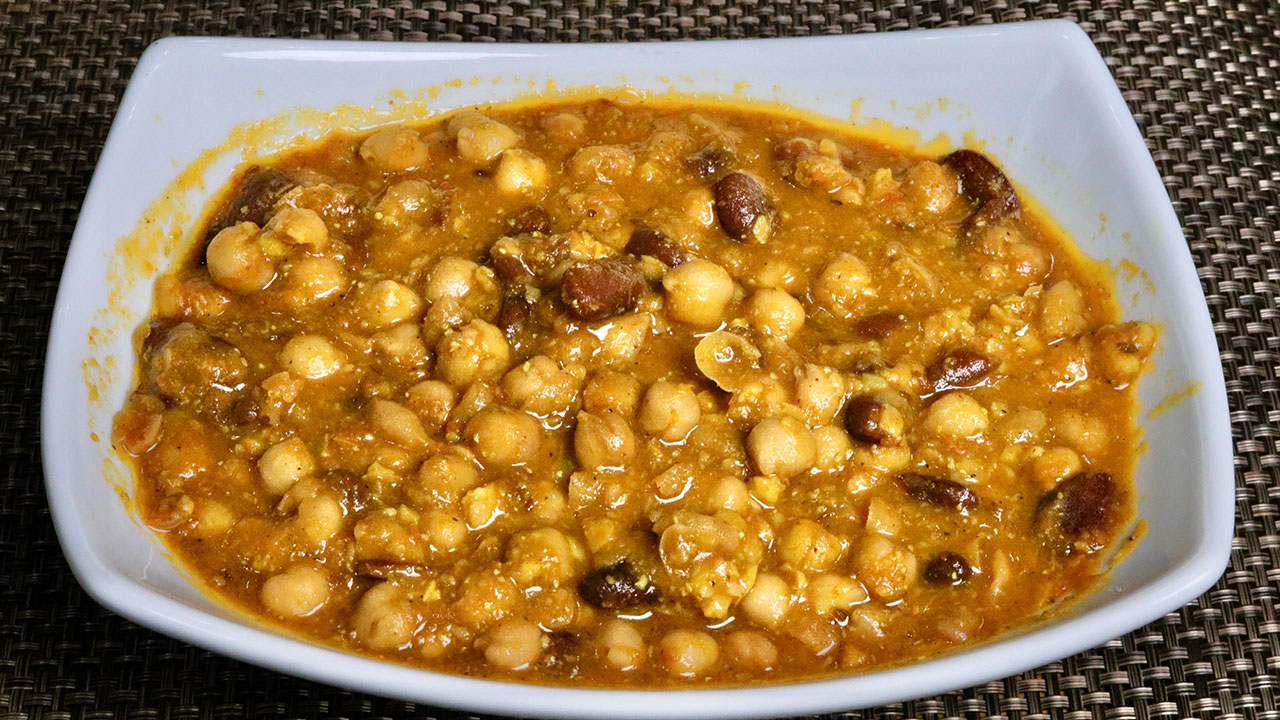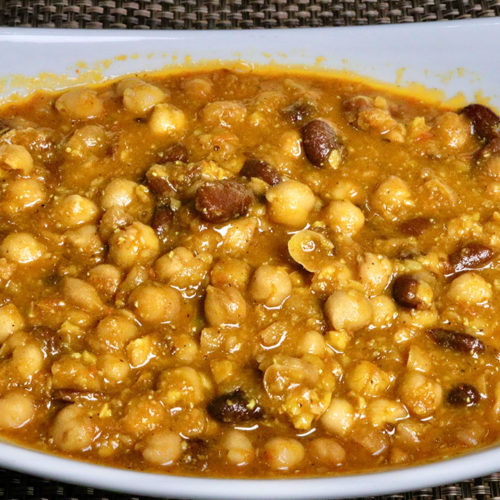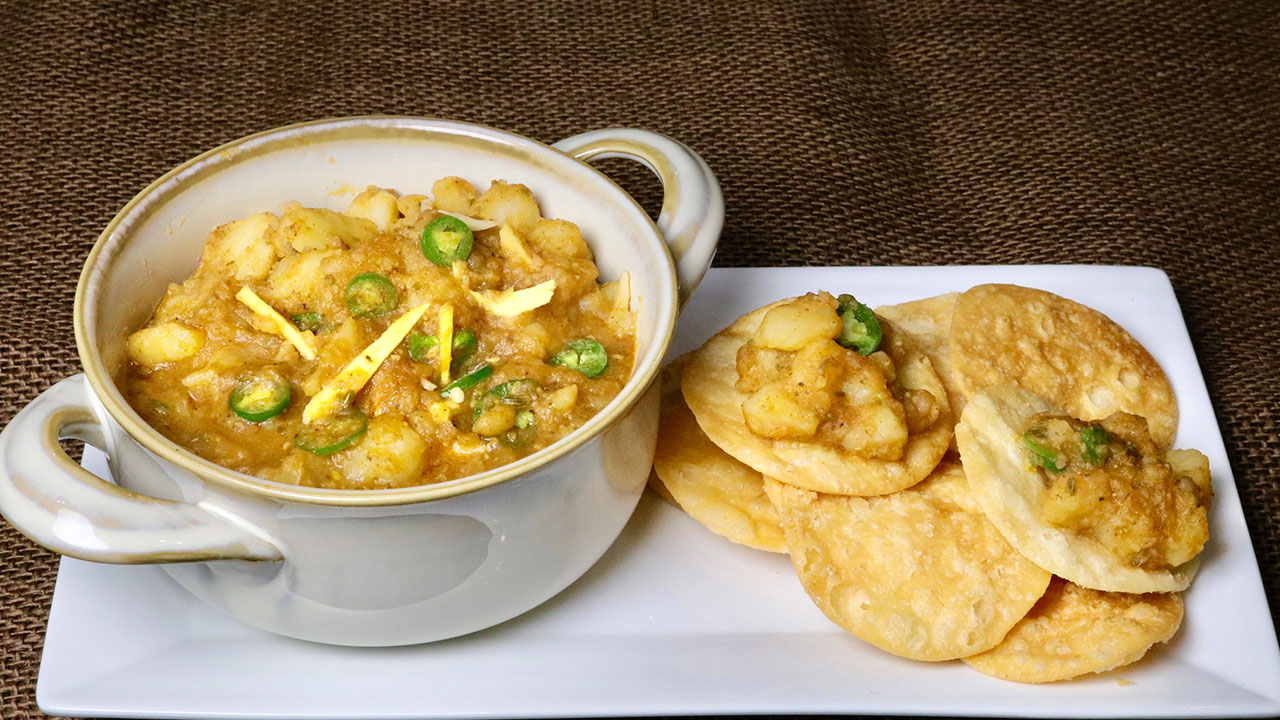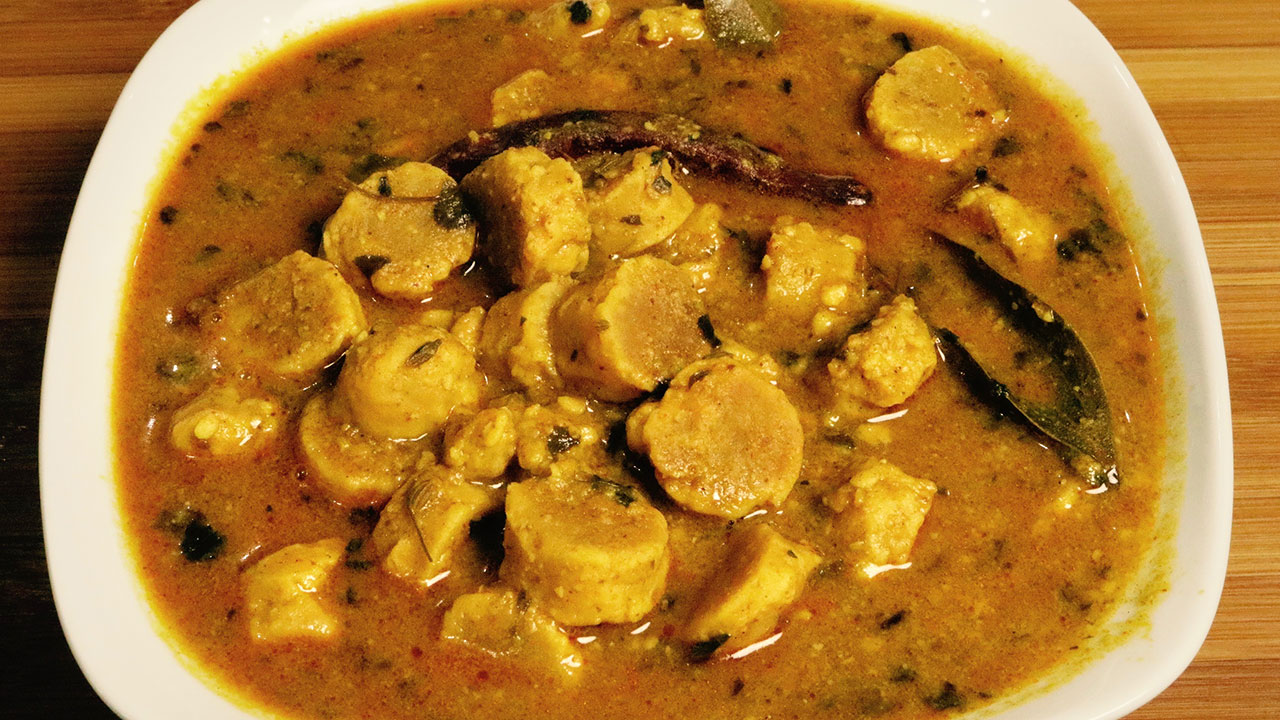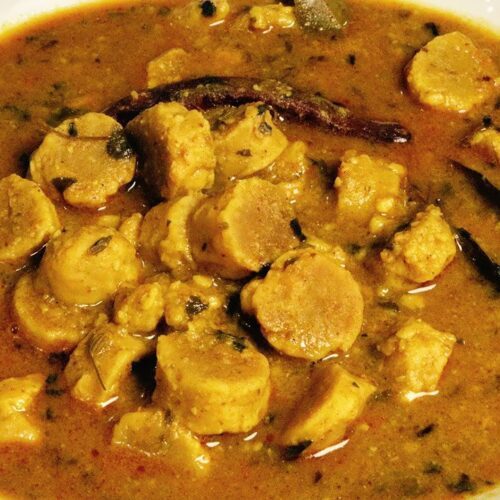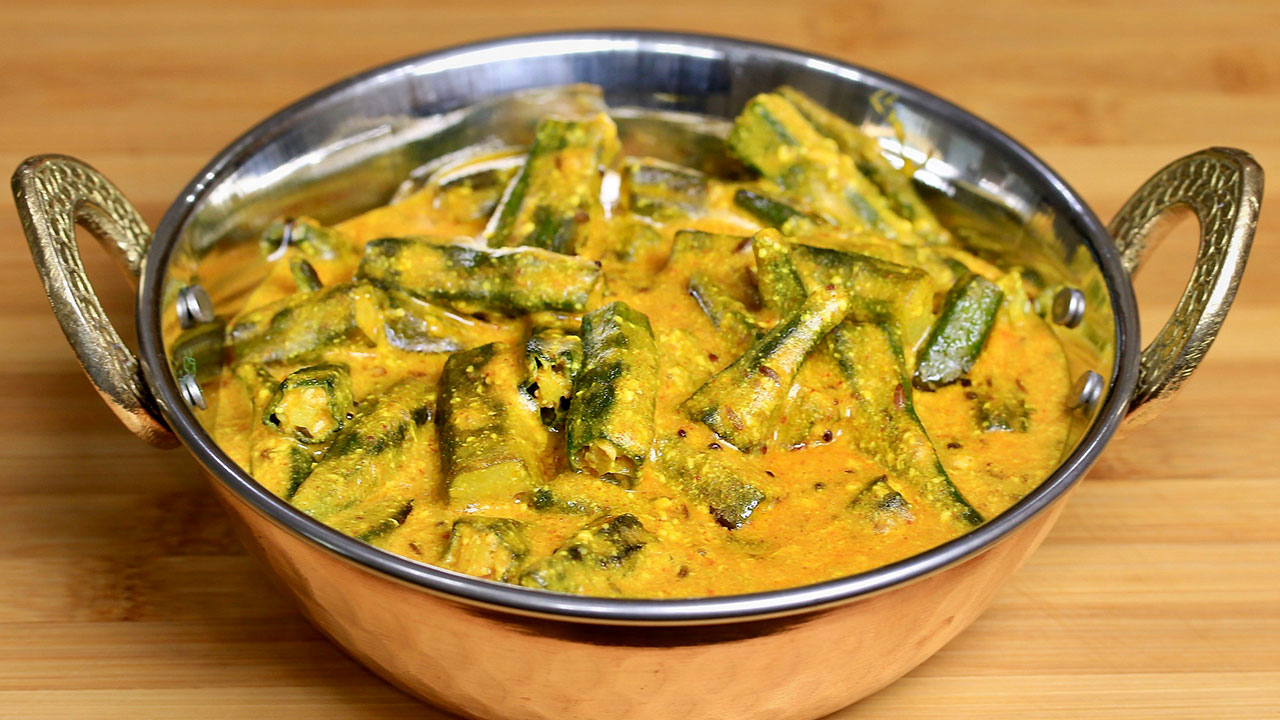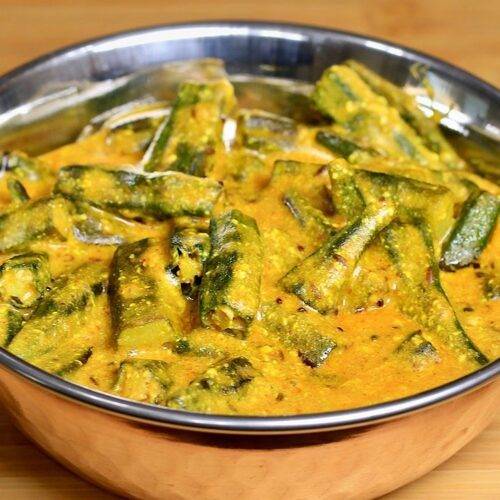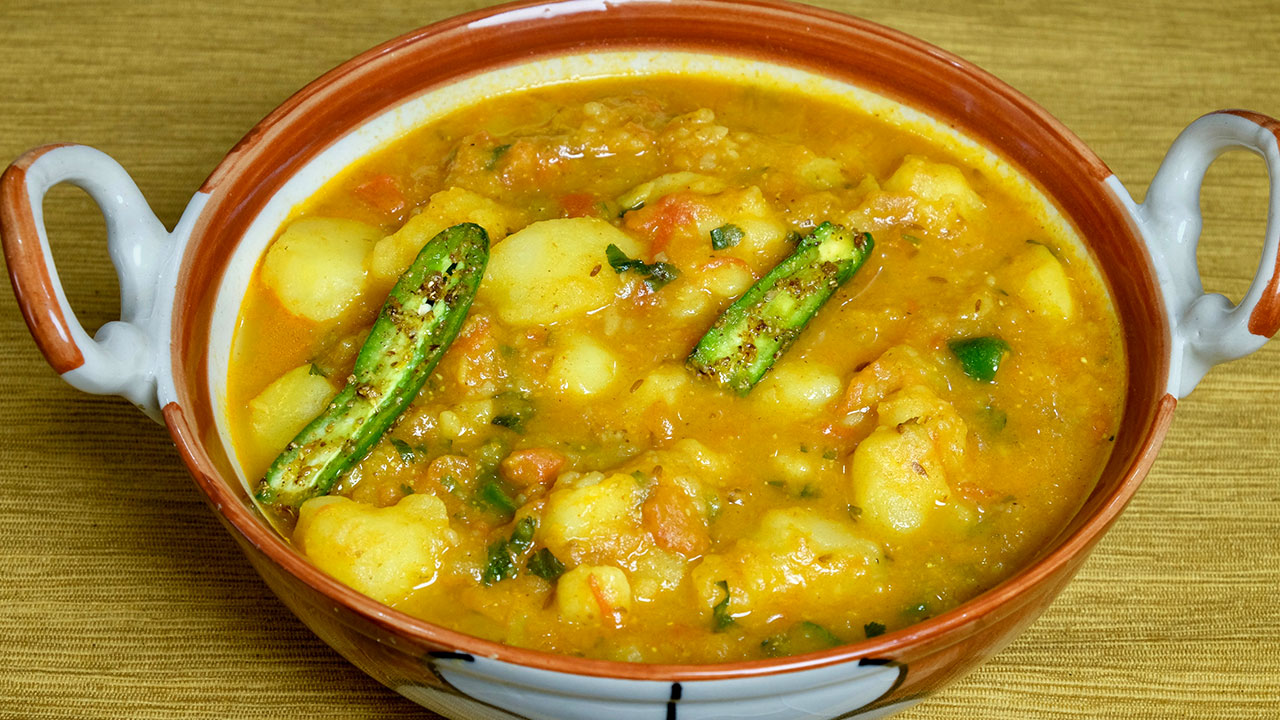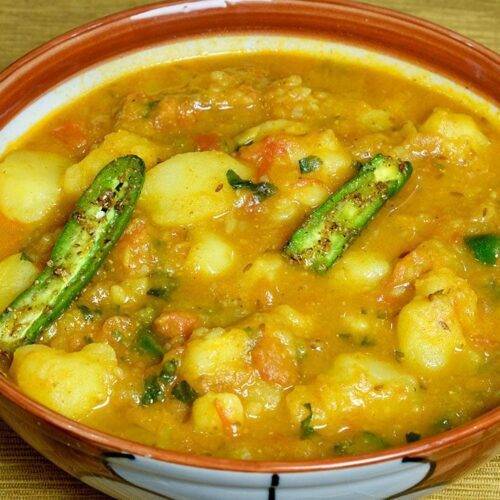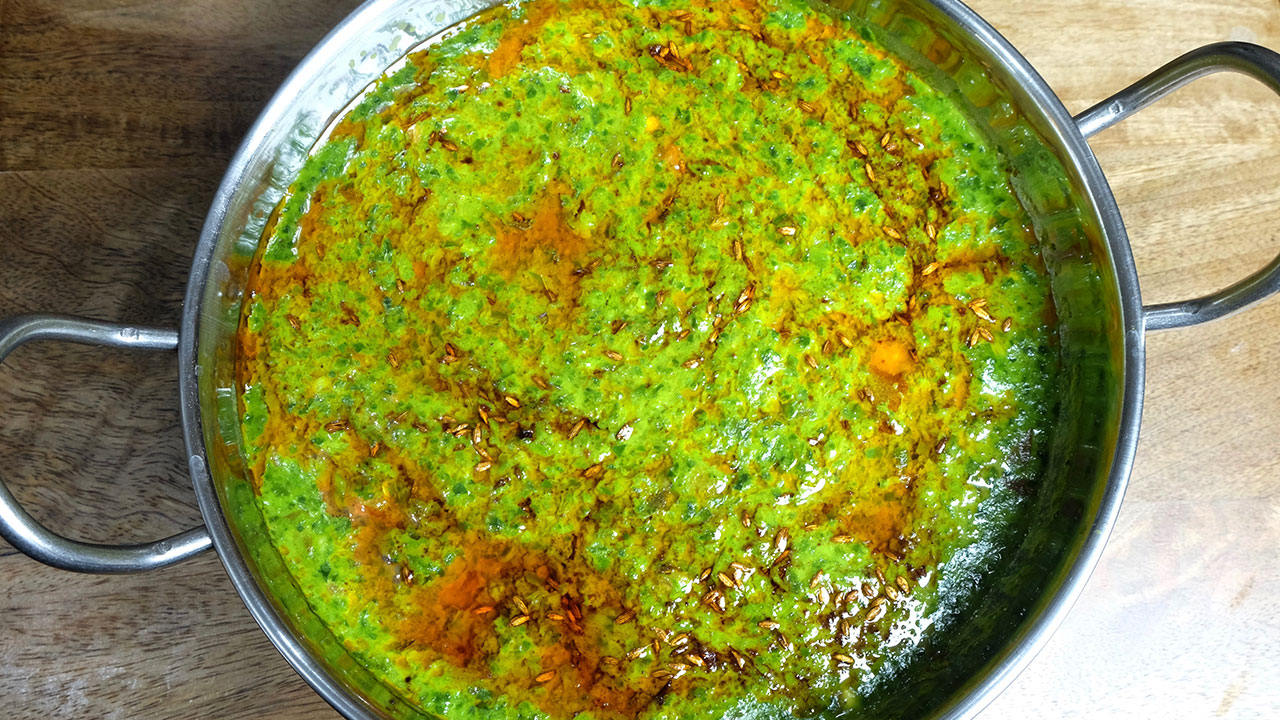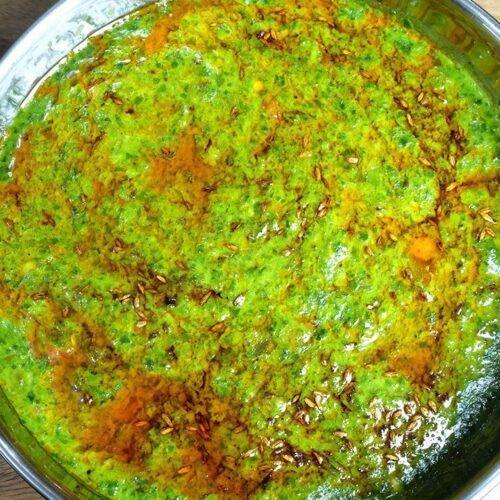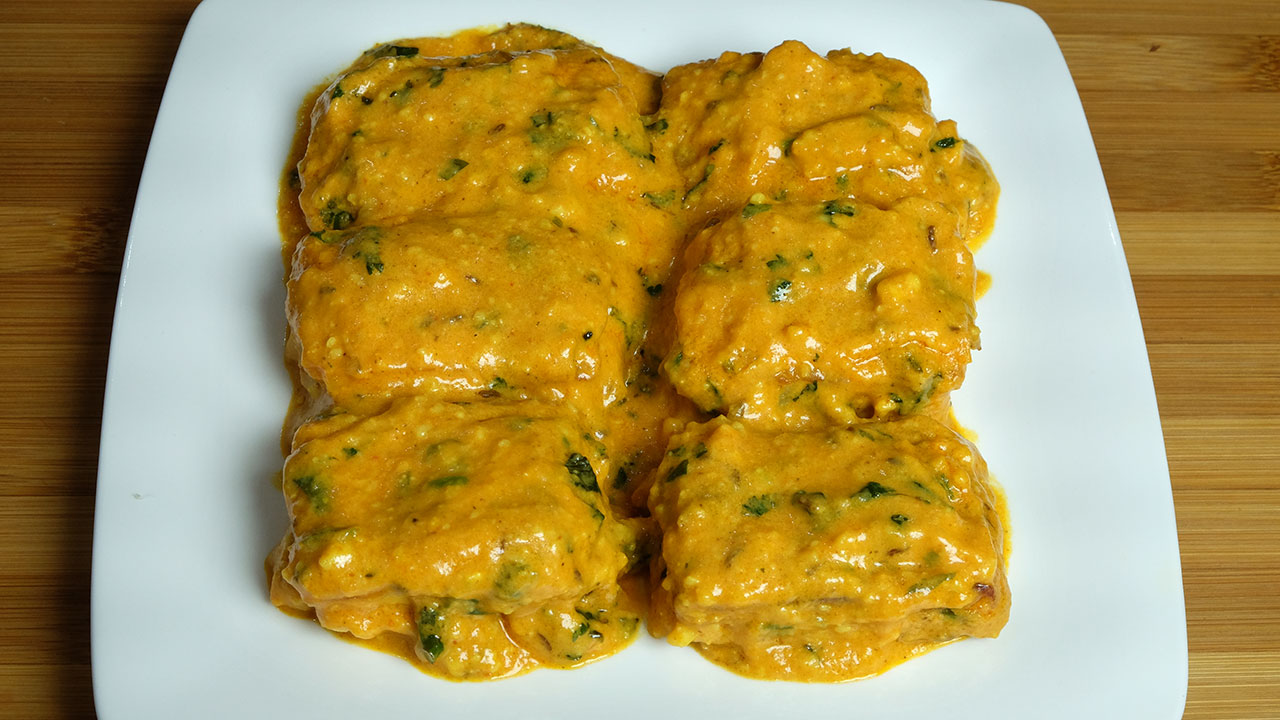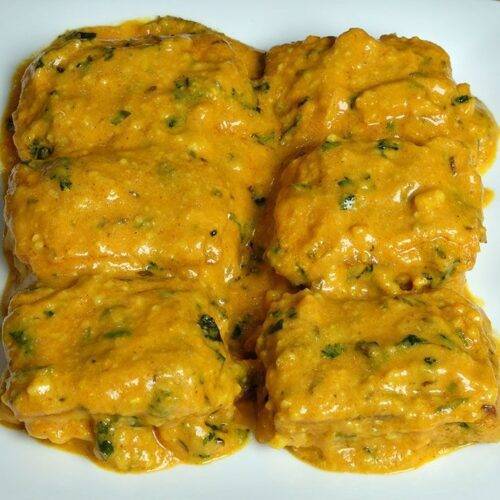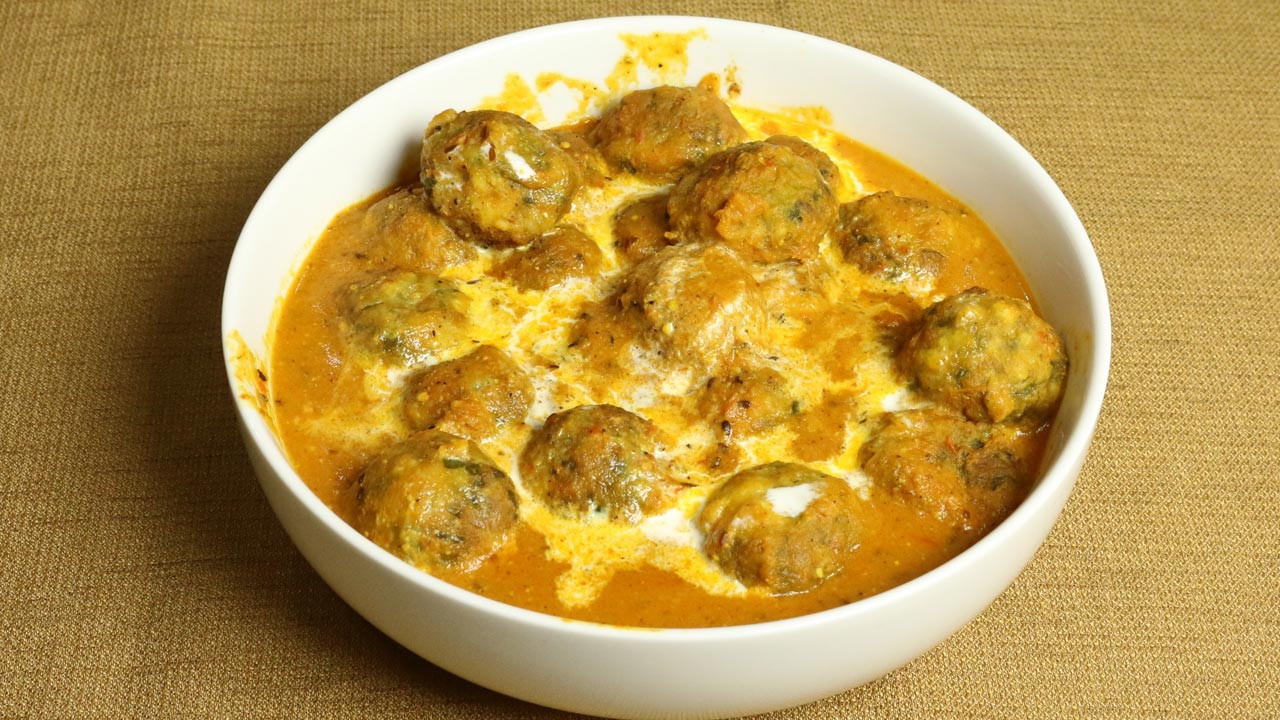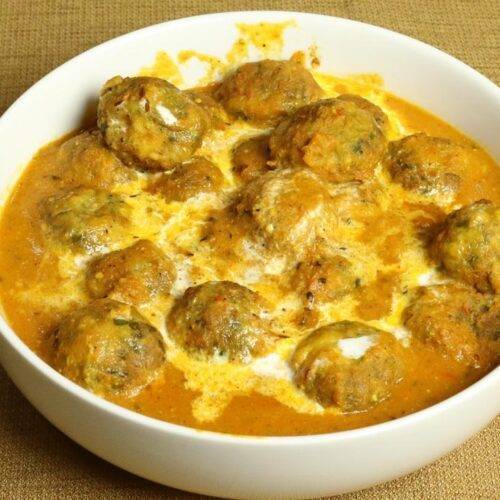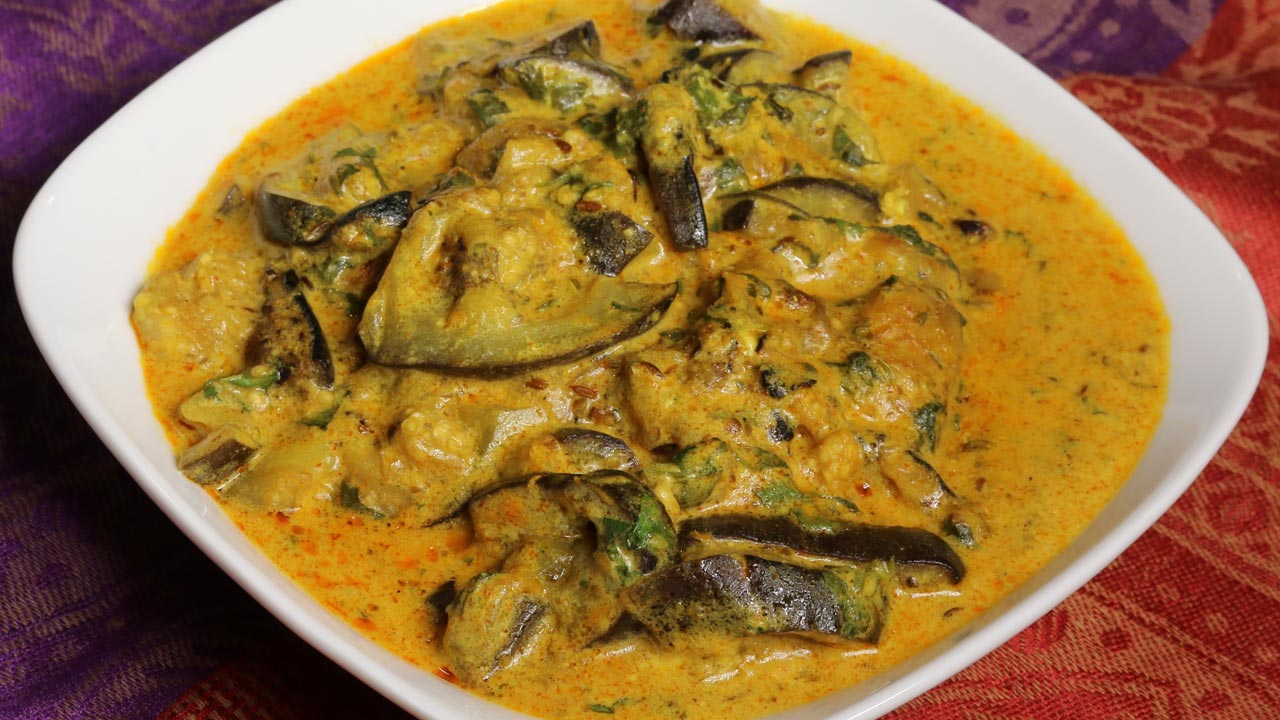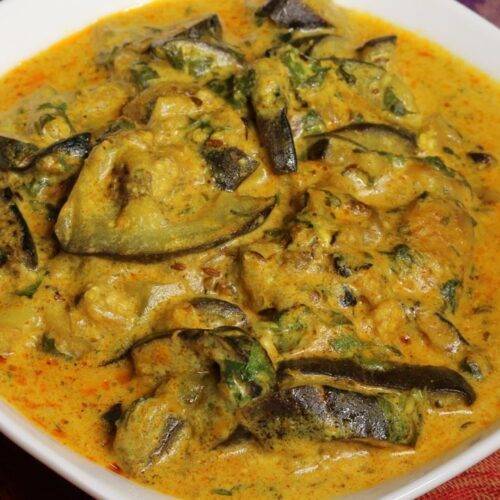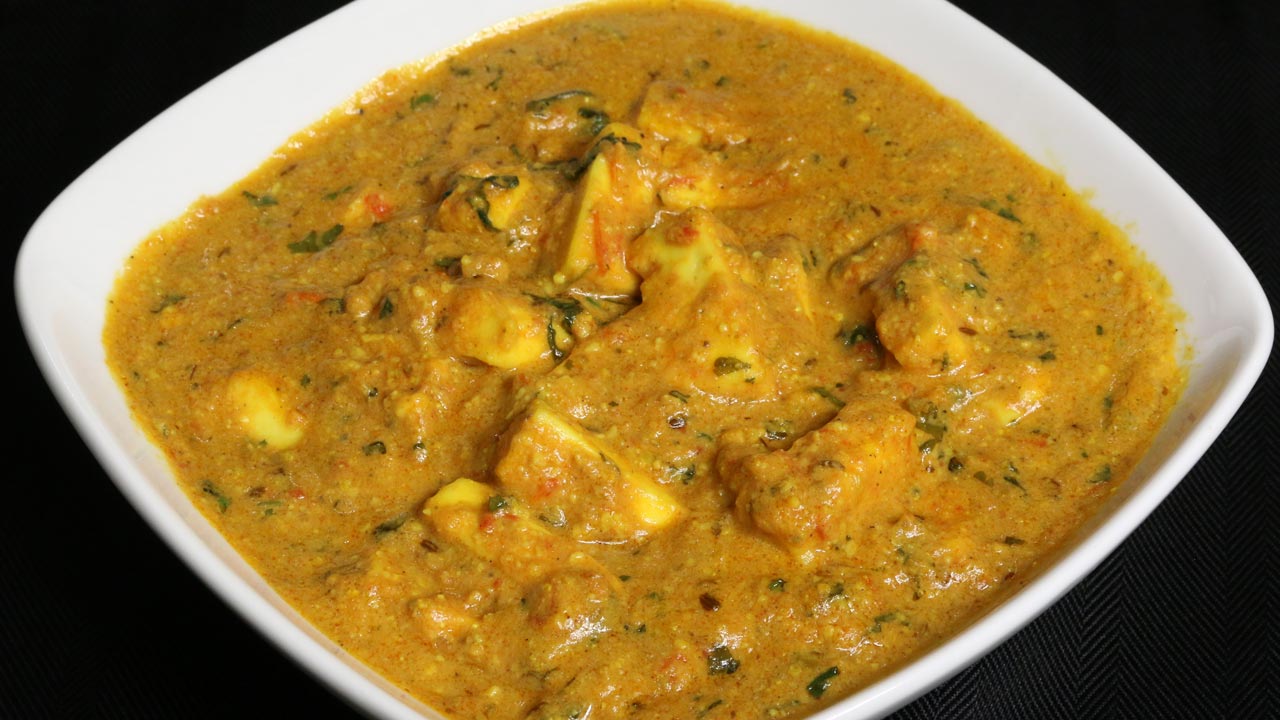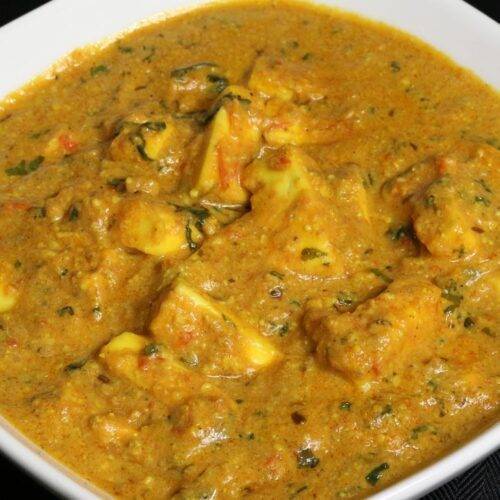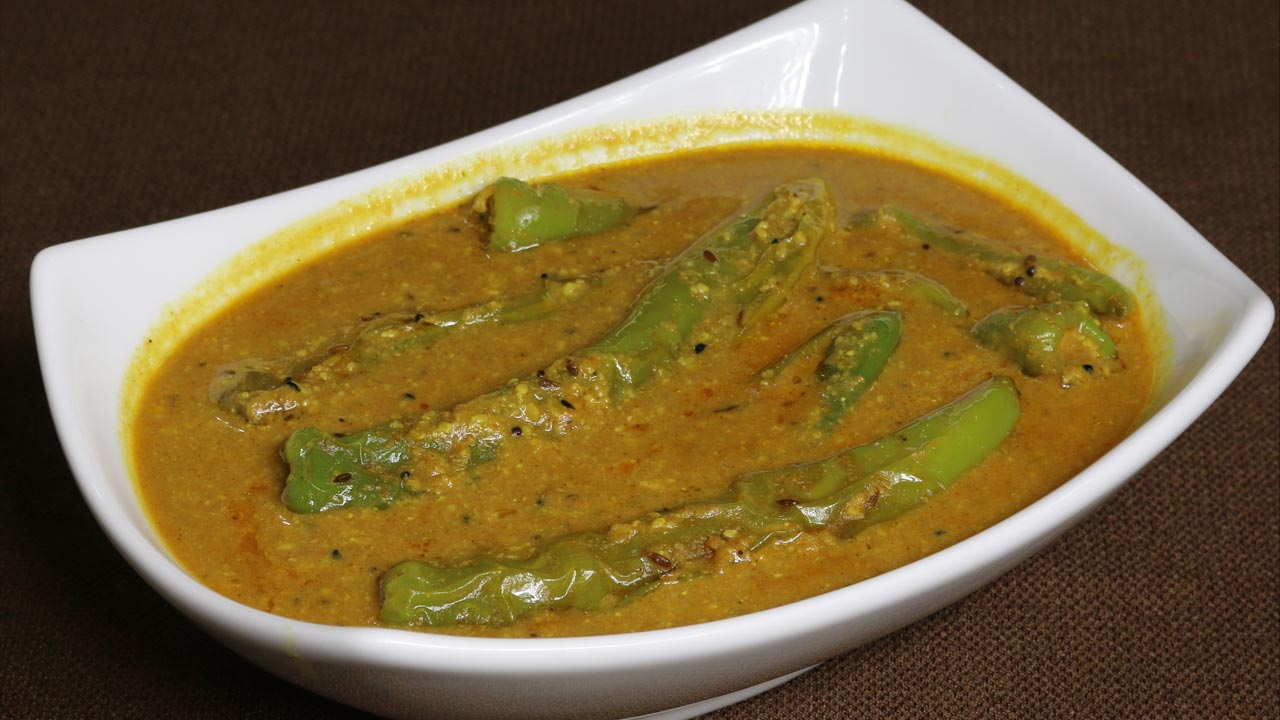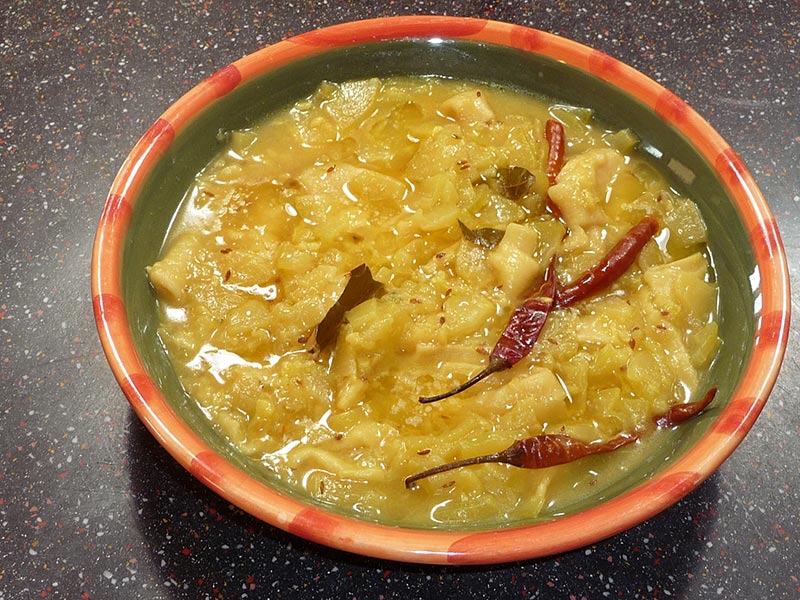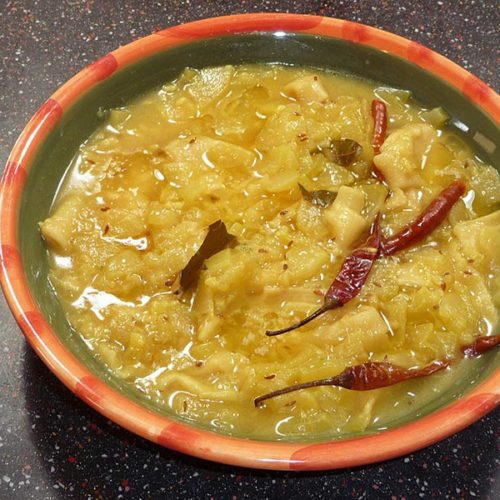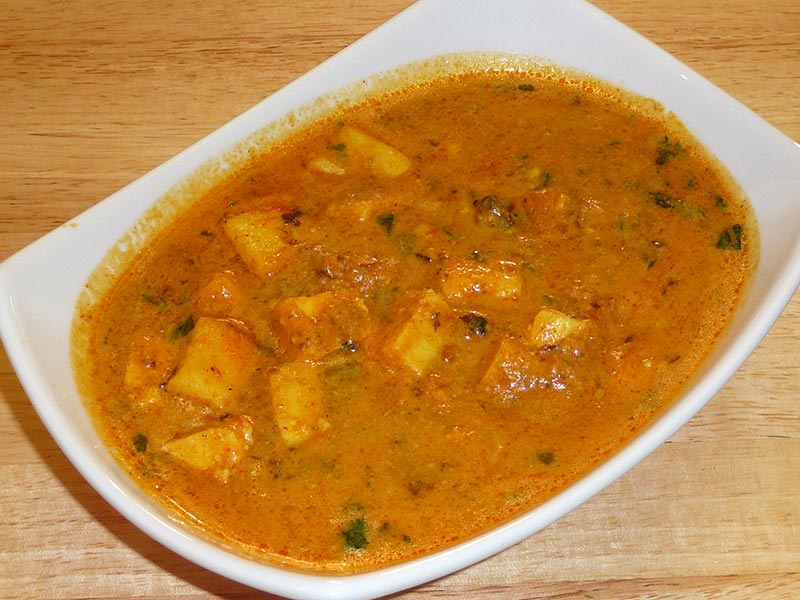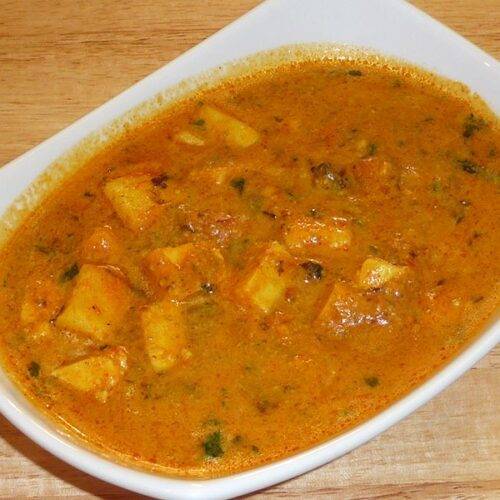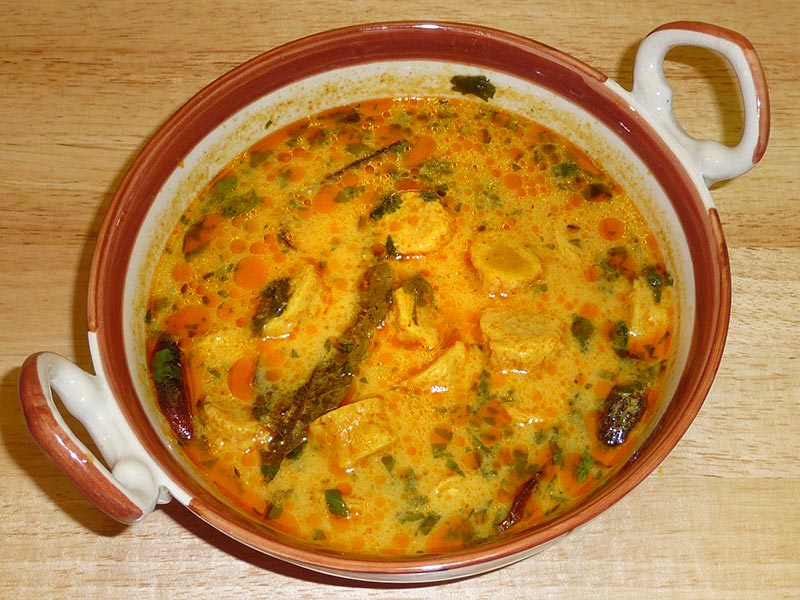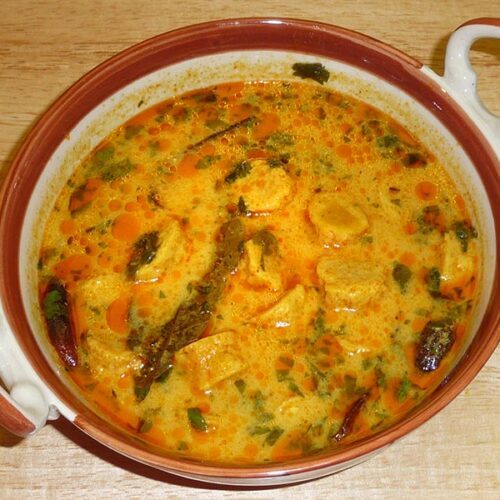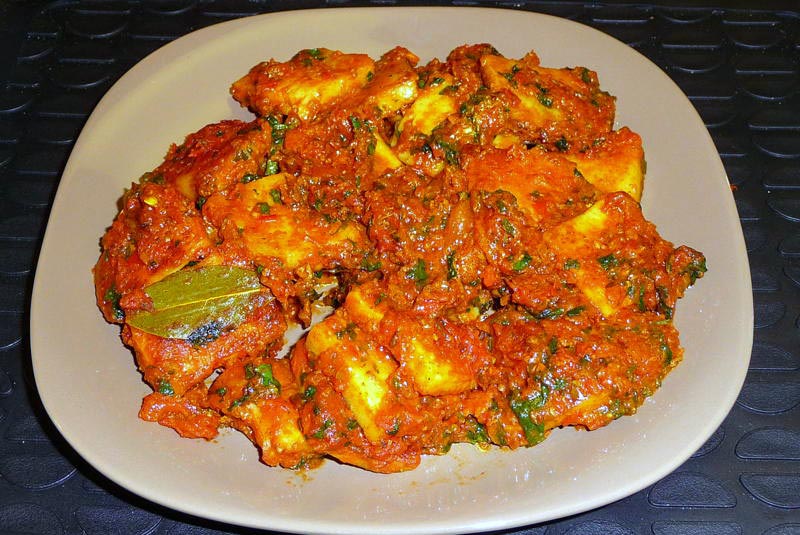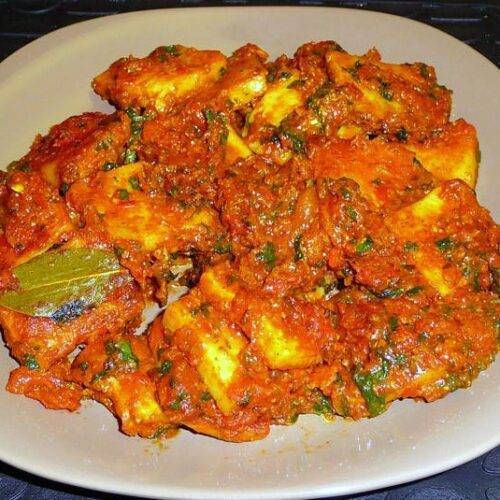Chole Rajma Curry
Ingredients
- 1 cup chick peas, chole, kabuli chana, garbanzo beans,
- 1/2 cup kidney beans rajma
- 2 cup diced tomatoes about I used 3 Tomatoes
- 1 Tbsp chopped ginger adrak
- 1 Tbsp chopped green chili
- 3 Tbsp oil prefer canola or vegetable
- 1/4 tsp asafetida hing
- 1 tsp cumin seeds jeera
- 2 Tbsp coriander powder dhania
- 1/2 tsp turmeric haldi
- 1/2 tsp red chili powder
- 1/2 tsp black pepper
- 1-1/4 tsp salt
- 1/2 tsp garam masala
Instructions
- Wash and soak chick peas and kidney beans in about six cups of water for at least 6 hours, preferably overnight (the beans will double in volume).
- Cook the chick peas and kidney beans in pressure cooker with 3 cups of water. Close the cooker and put the pressure on.
- Cook on medium high heat.
- As pressure cooker starts steaming turn the heat down to medium and cook for about 30 minutes.
- Close the heat and wait until steam has stopped before opening the pressure cooker. Beans should be soft and tender.
- Cut the tomatoes and green chili in small pieces, and blend tomatoes, green chili, and ginger to make a pure.
- Heat the oil in a sauce pan, test the heat by adding one cumin seed. If the seed cracks right away, the oil is ready. Add asafetida and cumin seeds, as the cumin seeds crack add tomato paste, coriander, turmeric, chili powder, and black pepper.
- Stir-fry for two to three minutes, until the oil begins to separate from the mixture. Add beans, salt, and more water as needed. Cover the pan and cook over medium high heat, for about 10 minutes.
- Turn off the heat. Chole Rajma Curry is ready to serve.
Notes
Rajma Chole Ki Recipe: A Hearty Indian Delight
Chole Rajma is a popular Indian dish made with a combination of two types of legumes: chickpeas (Chole) and kidney beans (Rajma). It is a hearty and flavorful curry/gravy dish that is commonly enjoyed as a main course. The dish is naturally gluten-free and high in protein, making it suitable for those with dietary restrictions or preferences. Chole Rajma typically includes a rich tomato-based gravy seasoned with various spices like cumin, coriander, turmeric, and garam masala.
It is often served with rice or flat bread (such as roti or naan) and is a favorite at parties or gatherings. Additionally, it can be made vegan by omitting any dairy-based ingredients like ghee or yogurt commonly used in some variations of the recipe. Overall, Chole Rajma is a delicious and nutritious dish that showcases the versatility of lentils and beans in Indian cuisine.
Chole Rajma Curry is a flavorful and hearty Indian dish that combines two popular legumes – chickpeas (chole) and kidney beans (rajma) – in a rich and aromatic gravy. This Chole Rajma Curry recipe is a favorite among vegetarians and vegans alike for its delicious taste and nutritious ingredients. With its perfect balance of spices and textures, Chole Rajma Curry is a comforting meal that’s perfect for any occasion.
Step 1: Soaking and Cooking Legumes
Begin by soaking dried chickpeas and kidney beans in water separately for at least 8 hours or overnight. Soaking helps soften the legumes and reduce cooking time. Once soaked, drain the water and rinse the chickpeas and kidney beans thoroughly. Cook them separately in a pressure cooker or large pot until they are tender and cooked through. Ensure that the chickpeas and kidney beans are well-cooked but not mushy.
Step 2: Preparing the Gravy Base
In a deep pan or skillet, heat oil or ghee over medium heat. Add cumin seeds and let them sizzle until fragrant. Then, add finely sauté until they turn golden brown and translucent. Next, add minced ginger, and green chilies, stirring well to combine. Cook until the raw smell of ginger disappears, infusing the base with aromatic flavors.
Step 3: Adding Tomatoes and Spices
Add finely chopped tomatoes to the pan along with ground spices such as turmeric powder, coriander powder, cumin powder, garam masala, and red chili powder. Stir well to combine the spices with the tomatoes and cook until the tomatoes break down and release their juices, creating a thick and flavorful gravy base.
Step 4: Combining Chickpeas and Kidney Beans
Once the tomatoes are cooked and the gravy base is well-flavored, add the cooked chickpeas and kidney beans to the pan, stirring gently to coat them with the gravy. Allow the legumes to simmer in the gravy for a few minutes to absorb the flavors and thicken the consistency. Adjust the seasoning with salt and sugar to balance the flavors.
Step 5: Garnishing and Serving
Before serving, garnish the Chole Rajma Curry with freshly chopped cilantro leaves for a burst of freshness and color. You can also drizzle a squeeze of lemon juice over the curry for an extra tangy kick. Serve the curry hot with steamed rice, roti, or naan bread for a wholesome and satisfying meal.
Tips for Perfect Chole Rajma Curry
Consistency of Gravy: Adjust the amount of water added to the gravy to achieve the desired consistency. The gravy should be thick and coat the legumes evenly without being too watery.
Mashing Legumes: For a creamier texture, mash some of the chickpeas and kidney beans with the back of a spoon or a potato masher before adding them to the gravy. This helps thicken the curry and enhances its richness.
Balancing Flavors: Taste the curry and adjust the seasoning according to your preference. You can add more spices for extra heat or sweetness to balance the flavors.
Variations of Chole Rajma Curry
Creamy Coconut Curry: Add coconut milk or grated coconut to the gravy for a creamy and indulgent twist. Coconut adds a hint of sweetness and richness to the curry, elevating its flavor profile.
Spinach and Paneer Curry: Enhance the nutritional value of the curry by adding chopped spinach and cubed paneer (Indian cottage cheese) to the gravy. Spinach adds a pop of color and nutrients, while paneer provides protein and texture.
Benefits of Chole Rajma Curry
High in Protein: Chickpeas and kidney beans are rich sources of plant-based protein, essential for muscle repair and growth.
Rich in Fiber: Legumes are high in dietary fiber, promoting digestive health and keeping you feeling full and satisfied.
Nutrient-Dense: Chole Rajma Curry is packed with essential vitamins, minerals, and antioxidants, making it a nourishing and balanced meal option for vegetarians and non-vegetarians alike.
Frequently Asked Questions (FAQs)
Can I use canned chickpeas and kidney beans for this recipe?
Yes, you can use canned legumes for convenience. Rinse them well before adding them to the curry.
Can I make Chole Rajma Curry ahead of time?
Yes, the flavors of the curry develop even more when allowed to sit for a few hours or overnight. Reheat it gently before serving.
Is Chole Rajma Curry gluten-free?
Yes, Chole Rajma Curry is naturally gluten-free as it contains no wheat or gluten-containing ingredients.
Explore more delightful Indian recipes on Manjula’s Kitchen, such as Palak Paneer for another culinary adventure.

